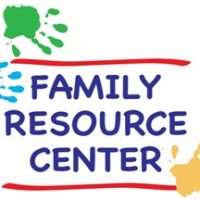
With a state budget shortfall of around $100 million expected when the
fiscal year ends later this month, Kentucky’s over 800 Family Resource and Youth
Services Centers-or FRYSCs-know the next state budget will be tight.
They also know they have the support of at least a few state lawmakers before the
next budget session even begins.
Rep. Regina Bunch, R-Williamsburg, yesterday informed her fellow members of the
Interim Joint Committee on Education that the services provided by the centers to
more than 1,160 schools statewide are “immeasurable.”
“There is no measure to what I have witnessed. If you see a young lady ready for the
prom who didn’t think she could go, how do you measure that? So I commend every
service you provide. I think it’s every dollar well-spent,” said Bunch.
Her comments followed those made by Sen. Stephen Meredith, R-Leitchfield, who said
that FRYSCs are in competition with other programs for state funding. Meredith
suggested the centers may want to physically track their success so lawmakers can
consider that data when each state budget cycle rolls around.
State FRYSC Division Director Melissa Goins said FRYSC success is typically measured
by the feedback that the centers receive from their “stakeholders”- teachers,
parents, school administrators and others.
“You’re right, there is a lot of competition, all over the state-a lot of
competition for dollars,” said Goins. She said it is the FRYSC program’s hope that
the stakeholders will speak up if expectations aren’t being met.
Retired Kentucky high school principal Rep. Charlie Miller, D-Louisville, was a
school administrator when FRYSCs were created as a component of the 1990 Kentucky
Education Reform Act. He stressed the importance of the centers’ work to his
colleagues on the committee.
“I know money is tight, but kids need help,” said Miller. “If we didn’t have FRYSCs,
they might fall through the cracks.”
Goins said that the fiscal year 2018 operating budget for the state’s FRYSC program
is $52.1 million. Less than 3 percent of the funding pays for administrative
costs, with the remainder divided among the centers based on the number of
free-lunch eligible students they serve. The amount budgeted per free-lunch eligible
student in fiscal year 2018 comes out to $170.05, said Goins. (That’s less than in
some prior years: In 2008, Goins said $210 was budgeted per free-lunch eligible
student, but an increase in students who are free-lunch eligible in recent years has
reduced the per-student rate.)
Students who aren’t on free lunch may also receive services, said Goins, if a need
is there.
“We fund centers based on free lunch, but if a student has a need, we don’t ask
them, ‘Hey, do you qualify for free lunch?’ before we respond to that need,” she
said.
While FRYSCs provide a long list of services, two of the most popular services
provided in 2015-16 were dental services and personal safety services. Personal
safety services may include teaching a student proper use of the Internet, or where
to go for help when a student feels his or her safety is threatened.
